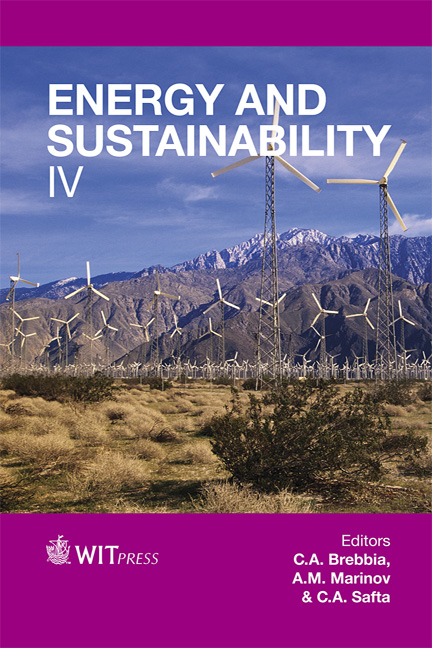Behavior Of Suspended Particulate Matter Emitted From Combustion Of Agricultural Residue Biomass Under Different Temperatures
Price
Free (open access)
Transaction
Volume
176
Pages
11
Page Range
315 - 325
Published
2013
Size
729 kb
Paper DOI
10.2495/ESUS130271
Copyright
WIT Press
Author(s)
Q. Wang, S. Itoh, K. Itoh, P. Apaer, Q. Chen, D. Niida, N. Mitsumura, S. Animesh, K. Sekiguchi & T. Endo
Abstract
Behavior of suspended particulate matter emitted from combustion of agricultural residue biomass under different temperatures Q. Wang, S. Itoh, K. Itoh, P. Apaer, Q. Chen, D. Niida, N. Mitsumura, S. Animesh, K. Sekiguchi & T. Endo Department of Environmental Science and Technology, Graduate School of Science and Engineering, Saitama University, Japan Abstract Energy and Sustainability IV 315 There are large quantities of waste rice husk and straw estimated around 3.9 million tons as biomass waste every year in Japan. Air pollutants emitted from exhaust gases of rice husk incineration lead to environmental damage, not only because of the influence on global environment and climate, when released into the atmosphere, but also on human health due to local air pollution. Therefore, it is necessary to effectively utilize waste rice husk and straw to reduce air pollutants. In recent years, there has been an increasing demand on the utilization of unused biomass instead of fossil oil fuel in combustors for farming greenhouses heating during the winter season. The increasing demand will increase the running costs. In general, since these combustors are small in size, there is a lack of regulations or laws (e.g. The Air Pollution Control Act and The Waste Disposal and Public Cleaning Law) in operation for their air pollution control. So far, small size combustors are characterized by their simplicity of structure and low costs. However, they emit visible black carbon (elemental carbon) due to their poor combustion performance. In this study, we investigated that the possibility of the substitution of fossil fuel by waste rice husk and rice straw in laboratory model combustion experiments. We evaluated the emission behavior of harmful air pollutants emitted from rice husk and straw combustion by measuring carbonaceous and ionic composition of suspended particulate matter in the exhaust gases. From the analytical results we found that particulate mass concentrations reduced substantially at high temperature combustion. From the results of our study, it can be suggested that stable combustion performance under suitable conditions in order to control less air pollutants emitted from biomass fuel although small size combustors are still not regulated.
Keywords
rice husk and rice straw, small size combustors, combustion conditions, carbonaceous, ionic and metallic composition, PM2.5





